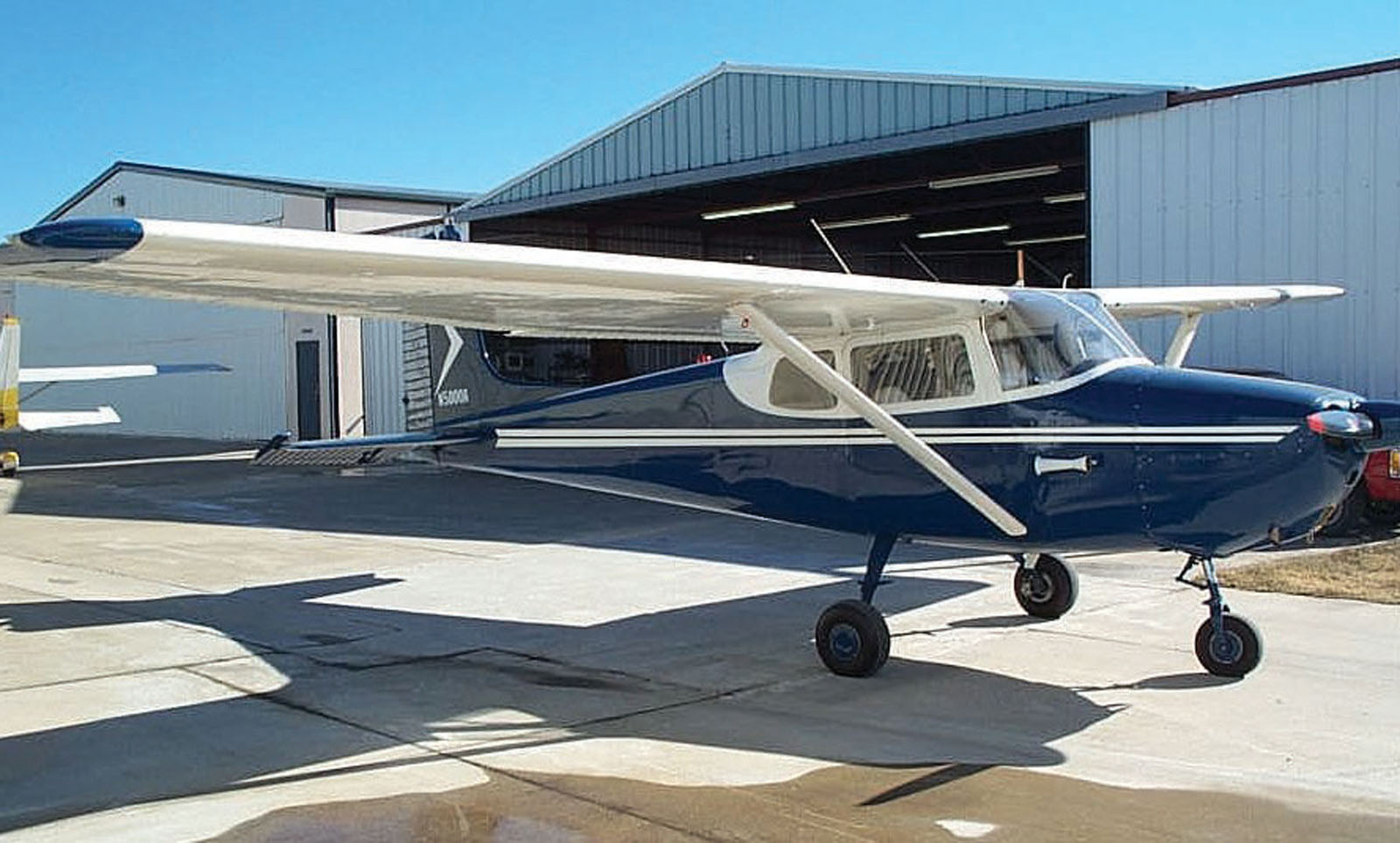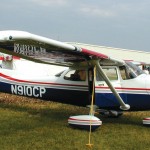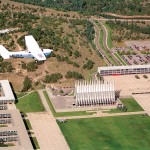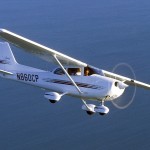By Henry M. Holden,
The Cessna 172 Skyhawk, a four-seat, single-engine, high-wing airplane, is probably the most popular flight training aircraft in the world. First delivered in February 1956, the 172 is still in production today.
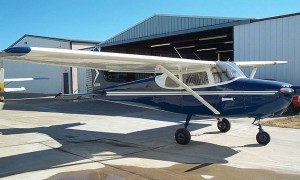
Joe Nelsen’s Cessna 172 is a straight-tailed Skyhawk, with a “fastback” fuselage. In 1960, Cessna created the swept-back tail, the first major change in the model, which is still in use today. It became the Cessna 172A.
At the peak of production in the late 1970s, Cessna was rolling out new Skyhawks at the rate of 40 airplanes a week. Today, more than 42,500 have been manufactured, making the Skyhawk the most successful mass-produced aircraft in history. On July 27, 2004, Cessna delivered its 150,000th single-engine piston aircraft. It was a 172 Skyhawk SP.
The nose-wheel Piper Tri-pacer and Beech Bonanza had been introduced in the 1950s and although it was new technology for the private pilot, Cessna jumped into the market. Cessna mounted its patented “Land-O-Matic” tricycle gear on a tailwheel-equipped Cessna 170. The company advertised that the “Land-O-Matic” could take “the skill out of landing and taking off.” Compared to the taildraggers, this statement had some truth.
The 172 model proved to be an instant success, with more than 1,400 built in 1956, the first full year of production. Back then, not everyone agreed that a tricycle gear was the wave of the future, but since its introduction, the Cessna 172 has become one of general aviation’s jack-of-all-trades. It has matured gracefully, forgiven many pilot errors, and is still, relatively speaking, inexpensive to operate.
Some have called the 172 the “pilot maker.” It’s slow by today’s standards, but it has allowed thousands of people to realize their dream—to fly. With wheels hanging in the wind, the normal cruising speed ranges from about 105 to 125 knots, depending on the engine and model. Students and low-time pilots realize the Skyhawk’s easy flying characteristics in the pattern. With its 174-square-foot wing, and large Para-Lift wing flaps, it lifts easily into the air. With its low stall speed, about 40 kias, and benign flight characteristics, it continues to command respect from students and admiration from instructors and GA pilots.
For a 50-year-old airplane design, the 172 has had relatively few physical changes over the years. Its predecessor, the Cessna 170, had a basic level of standard equipment that was incorporated into the 172. Joe Nelsen, of Gunter, Texas, owns the first production model, N5000A, s/n 28000. Nelsen, who has about 860 flight hours, bought the airplane in 1988.

The instrument panel on Nelson’s 172 is typical of the 1950s-era airplanes. There’s an apparent random placement of instrument gauges and little room for new avionics. The up side of this low panel is the excellent visibility, which Nelsen, appreciates.
The first thing Nelsen did when he bought the plane was replace the 20-year-old Nav/Com, which was barely functional. He installed a complaint instrument and later installed a separate Com and Nav. As a VFR pilot, he’s more comfortable with the steam gauges. He also top-hauled the engine, and replaced the cylinders. Remarkably, the bottom end of the engine is the original factory-issued, although it has been overhauled.
Around 1958, Cessna came out with wheel pants. A previous owner installed them on N5000A, and after Nelsen bought the airplane, he kept them on for about 10 years. He then decided that if he was going be flying the first 172, it was going to look like the original and be “period specific,” so the wheel pants were removed. The airplane now has about 4,300 hours on its airframe, and according to Nelsen, he has kept it as close to the “factory look” as possible, except for the addition of some safety-of-flight items, such as improved brakes and strobe lights.
In its early years of flying, N5000A was damaged twice. The first incident was a nose wheel collapse that occurred around 1960. In the second incident, in 1964, a student flipped it on its back. Part of its belly and torn empennage had to be replaced. Since that repair, Nelsen says that the airplane flies straight and level.

The Garmin G1000 NAV III glass cockpit integrates all primary flight, engine and sensor data to provide intuitive, at-a-glance situational awareness. Real-time, flight-critical information is presented on two big, colorful 10.4-inch active-matrix displays
“The mechanic did an excellent job,” he said
Over the years, few structural changes took place on the 172. The first significant modification, more visual than practical, came in 1960, when Cessna sculptured the sweptback tail. That tail design is still used today on all but two of the company’s singles, the 150 and 180.
The 172L, in production in the 1971/72 model years, was the first to feature the enlarged dorsal fin fillet. The airframe has remained virtually unchanged since then, with only minor modifications, such as a drooped wing leading edge for improved low speed handling, and updates to avionics and engines. The Garmin G1000 glass cockpit was introduced in 2005.
In 1968, Cessna re-engined the 172 with the four cylinder, 150-hp Lycoming O-320. Compared with the original O-300, it had two less cylinders, thus lower overhaul costs, a 200 hour greater TBO, improved fuel efficiency and more power. The O-320 powered airplanes, the most successful of the 172 model number, were in production through the 1970s.
In 1968, production began in Reims, France, on the “Reims Rocket.” Designated FR172J, the aircraft was produced from 1968 to the mid 1970s. The Rolls-Royce-built, fuel-injected Continental IO-360 D produced 210 hp and drove a constant speed prop. The 172 is a mechanically simple airplane, and relatively easy to repair. N5000A has an original Continental 6-cyliner, 145 hp, O-300A engine, and Nelsen can testify firsthand to the ease of repair.
“About ten years ago, I was coming out of McGehee, a catfish restaurant in southern Oklahoma (McGehee Catfish Restaurant Airport). I had just finished having lunch with Larry Schellenberger, my friend and mechanic, and we took off,” he recalled. “About 50 feet up, one of the exhaust valves failed, making it effectively a five-cylinder engine, instead of a six-cylinder engine. Normally at that point, my flying speed would have been about 85 mph, but it had dropped to about 70 mph.”
He said the airplane flew fine, and they circled the field and landed.
“Larry let it cool off and then we took the engine apart on the grass strip, fixed the valve temporarily, put it back together, and flew home,” he said. “When I had been shopping around for an airplane, I discovered that if you lose a cylinder on a four-cylinder engine, it will shake so badly that you’d have to shut it down. On a six-cylinder engine, losing one cylinder will give you a little shaking, but the other five will keep you flying. That’s exactly what happened here.”
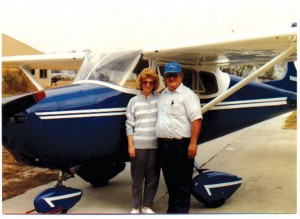
Two years after this 1990 picture was taken, Joe Nelsen, shown with his wife, Patty, had the wheel pants removed from their Skyhawk. That aircraft is the first production 172.
In 1985, Cessna merged with General Dynamics Corp. as a wholly owned subsidiary. The following year, concerns over product liability brought a halt to the production of the Cessna 172, and all other single-engine pistons. The last Skyhawk off the line was the Model P.
Although 85 percent of the crashes were due to pilot error, 90 percent of the lawsuits were aimed at the manufacturers. The large damage awards cost the private airplane manufacturers, on average, $100,000 per aircraft manufactured. In 1994, the General Aviation Revitalization Act was signed into law. It partially rewrote liability standards and gave manufactures some relief.
When Textron purchased the line from General Dynamics, production of the Skyhawk resumed. In June 1996, the new Skyhawk was granted type certification by the FAA. By November, the Skyhawk was back in the air, as the 160-hp Cessna 172R. The 180-hp Cessna 172SP, followed in 1998.
The newer Cessna 172s have great advantages over the earlier models. The 172SP has more power, a definite 15 knot speed advantage over its aging relative, but it costs about 10 times what an early 172 would, if the 172 were put on the market. Some people prefer nostalgia; however, the old guard, and the new, both enjoy the same ease of handling, and the same feel of the yoke and sound of the engine.
- The Civil Air Patrol began using Skyhawks in 1967. Also, more than 20 percent of the 1.2 million Young Eagles flown by EAA-member volunteer pilots since that program began in 1992 took their flights in the Cessna 172. This is a 1999 172S model.
- The military version of the 172 is the U.S. Air Force T-41. The Air Force Academy’s flying club uses this aircraft.
- The first Cessna 172 cost about $8,600. A new Skyhawk 172R, with standard equipment, starts at $172,500and tops off around $250,000, dependingon the avionics suite and creature comforts installed.











